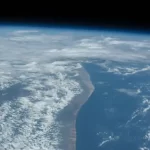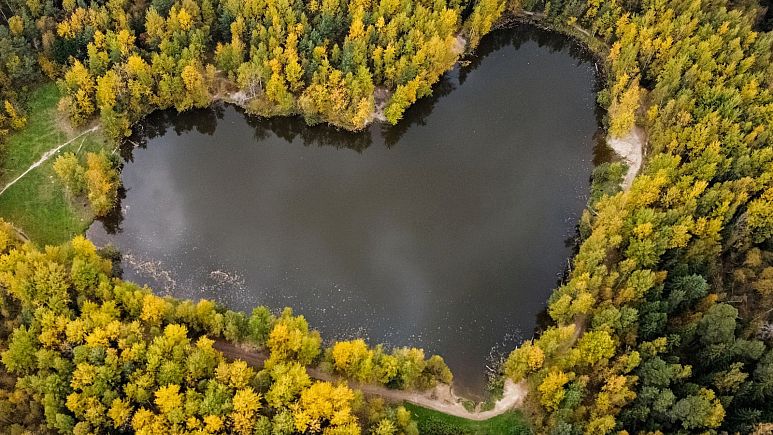Natural environments around the world are increasingly under threat, from the Amazon rainforest to the frigid oceans, with all their land and sea life.
Today, the world needs to act to keep a third of the land and sea spaces safe from danger to save nature and its ecosystems, according to United Nations experts.
The call is a key plank of a global agreement discussed in depth this month at the UN COP15 biodiversity summit in Montreal.
If the agreement is accepted at the end of the summit next week, it would mean governments agreeing to set aside 30% of their land and sea land for conservation by 2030, which would mean twice the amount of land and more than three times the amount of ocean currently under conservation.
110 countries support the 30 x 30 target, including Canada, the United States, and France.
Supporters of the action say achieving this goal is crucial to reversing the ongoing destruction of nature.
Currently more than a million species are at risk of extinction, while insect numbers are declining by up to 2% each year globally, and about 40% of the world’s remaining plant species are in crisis.
However, some experts believe that promises to protect 30% of the planet are not enough. “The danger is that all these actions driven by politicians aiming to give them simplistic numbers, they want to leave Montreal saying they’re going to protect 30 percent of the planet, but that alone isn’t enough,” says Stuart Pimm, a Duke University biologist.
Is 30% sufficient and effective?
This question faces the dilemma of quantity versus quality.
According to experts, there is no strong scientific argument behind keeping a minimum of 30% to avoid species loss. It may require preserving a greater proportion of sea and land or even less, depending on the areas chosen.
“30% is neither necessary nor sufficient,” says Beam. “If we do things the right way, we protect biodiversity intelligently by protecting important areas.” He adds that there is a temptation to preserve vast swaths of land that are largely uninhabited, but have low biodiversity. Relatively, like the Arctic tundra or the Sahara Desert.
What is important is to protect areas that are natural habitats for many and many species, known as biodiversity hotspots, even if they are more difficult to preserve because they are so heavily populated or have extractive industries. Protecting narrow parts of land and sea like Australia’s Great Barrier Reef or the Andes Mountains can be much more beneficial and rewarding than protecting vast expanses of prairie, for example.
“The numerical target won’t work,” says Beam. “If we only want to protect 50% of the planet, and on the basis of that we protect the less populated areas, it will do very little for biodiversity.”
A June 2022 study published in the journal Science found that at least 44% of global land area is needed to protect areas of high species diversity, prevent loss of healthy ecosystems, and improve landscape representation and diverse species. But more than 1.8 billion people live in these regions.
However, researcher at the University of Queensland and co-author of the study, Hugh Bosingham, indicated that the 30% target is not really a panacea but rather contributes to focusing the attention of state governments, and most of them can achieve it by 2030, adding that some countries, such as Bhutan, have exceeded this. target already.
A national or global goal?
One of the main points of tension that emerged in the discussion of this target at the CBD summit was its scope of implementation; Is it implemented on a global or national level?
Scholars and negotiators see it as an important difference. Some countries are small, and do not have large areas to set aside for conservation, while others have large areas with a high level of biodiversity, such as tropical forest countries such as Brazil and Indonesia. If countries with high biodiversity only protect 30% of their territory, it could actually lead to major ecological losses.
“Some ecosystems are more diverse and fragile,” Bosingham says. “Regions like the Amazon need to conserve more than 30% of them to protect biodiversity and maintain ecosystem functions that stabilize the planet’s climate.”
Currently, less than 50% of the Amazon is under some form of formal protection or local stewardship, so the National Pledge to Preserve 30% of the Territory is a significant downgrade.
What is considered protected?
Another point of contention facing this goal is the concept and details of protection.
Some countries may allow people to live in protected areas or promote indigenous stewardship of protected lands. Some may even allow extractive industries to be practiced under permits and in an organized manner. In other cases protected areas may be off-limits to all.
The EU proposes to allow activities such as logging, mining and fishing to be carried out under managed conservation laws for 20% of protected areas, while 10% is kept under stricter protection restrictions.
Following the idea, the non-profit environmental organization Greenpeace last week accused the European Union of trying to relax the restrictions and details of the 30*30 goal, which the European Union denied.
“Whatever activity is carried out in those areas, it should not harm biodiversity and the functioning of the ecosystem,” Ladislav Miko, the Czech Republic’s special envoy for biodiversity to the European Commission, told a news conference last week.












